As of yet it is unclear where exactly the symbol of the dragon as protector of the city of Ljubljana originates. It has been attributed to the Slavic myth which states that defeating a dragon results in a more powerful river, which in turn ensures the fertility of the earth. Considering that Ljubljana’s marshes have seen many a flood both in its distant history and its recent one, this myth fits into the story. There is also another origin attributed to the Ljubljana dragon, which stems from a Greek legend of the Argonauts. Their leader Jason, after leading the Argonauts to victory at the Golden Fleece, is said to have defeated a terrible beast, what is now know as the Ljubljana dragon, while they were wintering near a lake somewhere between Vrhnika and Ljubljana. In fact, in this account, Jason is the founder of the city of Ljubljana and its first real citizen. Coincidentally, there is no explanation as to how exactly Jason did manage to kill the dragon but I’m willing to guess it wasn’t fire-related. After all, if I’ve learned anything as of late, it’s that fire cannot kill a dragon. There is also a third explanation of how the dragon was adopted as the emblem of Ljubljana, which is considered more realistic. However, it involves no dragon slaying or indeed any live dragon at all and so, I will not bother to recount it here. What’s the point if there’s no actual dragon involved, am I right?
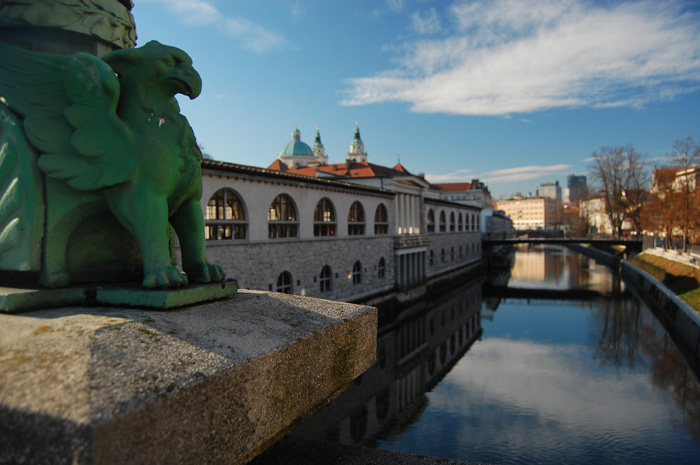
The lampposts on the Dragon Bridge depict griffins. In the background you can see the colonnade of the central market and The Cathedral.
The Dragon Bridge, today a must-see spot for any Ljubljana tourist, was built in 1907 in honour of the emperor Franz Joseph I’s reign, after whom it was initially named before being renamed to Dragon Bridge. Its architect Maks Fabiani also incorporated the Dragon Bridge into plans for a new traffic ring that would eventually be built around the city centre. This was at a time when Ljubljana was still part of the Austro-Hungarian Monarchy. Local legend states that the dragon will move its tail whenever a virgin crosses the bridge. I stood there for hours on end, watching crowds of people go by and trying to catch some tail wiggling. It has not moved once. Make of that what you will.
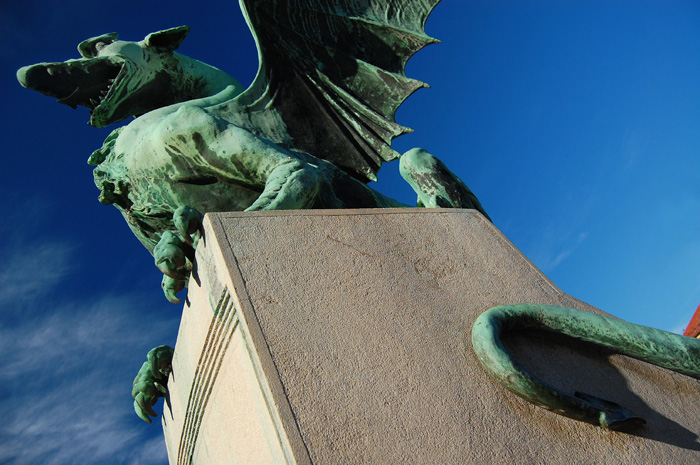
The famous Ljubljana dragon as seen on The Dragon Bridge
Right next to the Dragon Bridge is the Ljubljana central market, which is largely an open-air market space but it does also include a covered market and various small shops and food stalls located in a colonnade, famously designed by Ljubljana’s own architect Jože Plečnik. In the market you can get food such as vegetables and fruit, dry and fresh meat, homemade biscuits, cheese, nuts and seeds. The majority of the food available is typical for Slovenia, however there is also a wide variety of ethnic and international food available in designated stalls, each of them representing its own international dish. Moving away from the Dragon Bridge in the direction of the Triple Bridge, there are also stalls that offer souvenirs – the most popular ones are dragon related. As it should be.
The Ljubljana central market lies on Vodnik Square, named after renowned Slovenian poet Valentin Vodnik. Back in the Middle Ages this was where the town wall ran, separating Ljubljana from a nearby village (which is now part of the city). After the wall was taken down as the city grew, a church with an adjoining graveyard was built in its stead. Since then, the building had been used as a hospital, a school and finally, a museum. The building did not survive the earthquake of 1895 and it was then that they transformed this area into a square with the name being assigned after the statue of Vodnik, which by that time had already been set in its place.
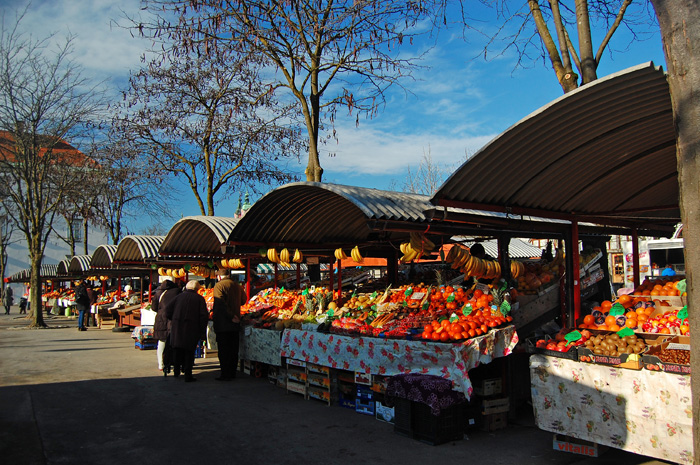
Right next to the Dragon Bridge is the Ljubljana central market.
Vodnik’s statue is faced towards the castle, turning its back on the market. This has been attributed to Vodnik welcoming the sight of the castle, as well as despising the city market. None of this is true, however, as the statue was built at a time when the school was still there and so it was placed so as to face the school’s entrance.
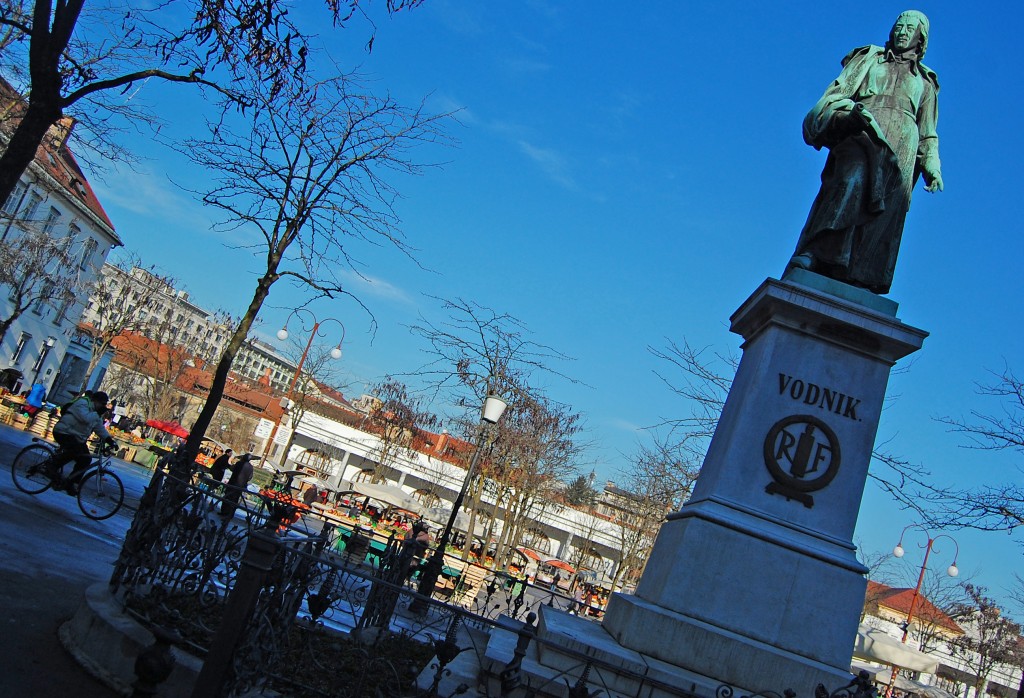
Vodnik is turning his back on both the Ljubljana market and the Dragon Bridge, instead facing the castle.
Overlooking the market is the church of Saint Nicholas, colloquially known simply as The Cathedral. This cathedral plays a big part in the shape of the landscape of the city and is worth a visit for anyone interested in architecture and art, as The Cathedral is considered one of the most beautiful churches in Slovenia.
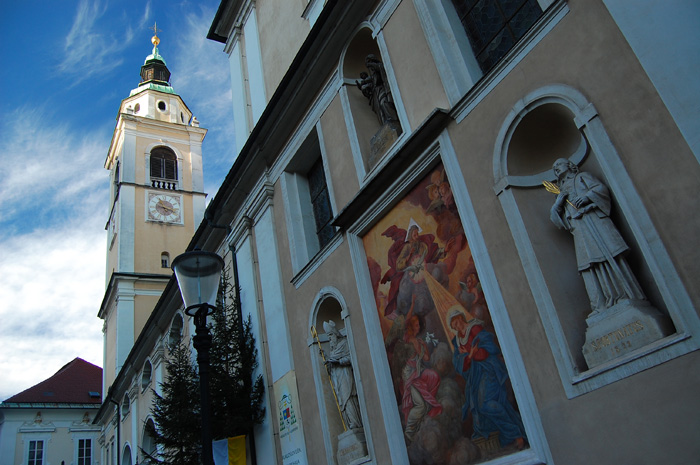
The Cathedral or Church of Saint Nicholas
Architect Andrea Pozzo, who implemented the main techniques typical for the Baroque era, designed this cathedral early in the 18th century but many of the church’s interior elements were not added for another century. These elements include frescoes, statues and the main entrance. I literally popped in and out of the church but being something of an art enthusiast, I quite enjoy comparing different art techniques, the Baroque one being a familiar sight in Ljubljana.
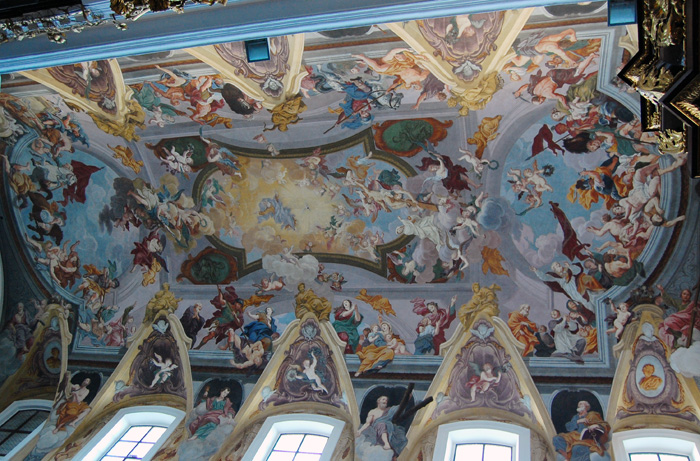
The fresco on the cathedral’s ceiling was painted by Giuglio Quaglio.
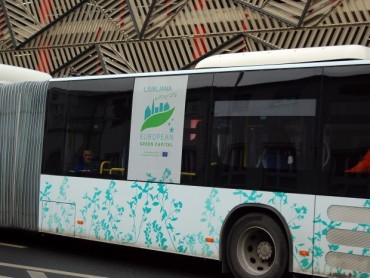
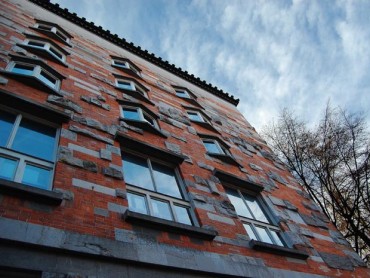
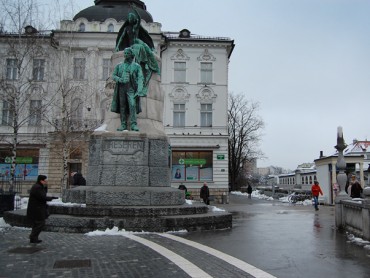
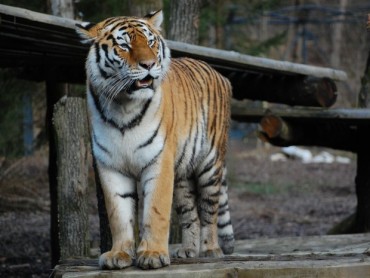
I’m currently watching The Game of Thrones so air am very taken with the dragon bridge. The strange Names (strange to me) make it more exotic. Loved this post.
Dragons! I love them. What a great symbol of a city. Would love to see the bridge myself someday.
The dragon really looks like protecting the bridge! Awesome view!
I can’t say I’ve traveled to this part of the world yet, but I’ve heard a lot of good things from fellow travelers about this region. The Dragon Bridge really looks like a lovely place to read up about history and ancient myths. The market looks good too!
It is always nice to read something from our capital, especially about the Ljubljana Dragon. I guess stories have been attracting people visiting places for ages and hopefuly the Dragon story will attract lots of new people to visit us 🙂
I’ve never been to Ljubljana, but would love to visit one day. It looks very pretty in your photos.
Really shame on me! I am Hungarian and I have never been to Slovenia. My excuse is that I started to have money for traveling when I moved to Spain almost a decade ago, and from there it’s not so close any more:) Lovely pictures and interesting read about the Slovenian capital, I hope I can really get there soon!
Love! Going to Ljubljana in May and will have to bookmark this!
I had to google where this city Ljubljana is! I feel so ill-informed. haha, I love greek mythology and my attention was caught when you said that Ljubljana has all these familiar stories. I was in awe with the cathedral’s ceiling, it’s amazing!
Never been to Slovenia but it looks historical to me. The scenery is beautiful. Nice photographs and thanks for sharing with us.
Very nice to hear about the origins of that Dragon statue. For sure a lot of myths are said about it. Indeed a great place to visit for the tourists!
You have beautiful photos here. Thanks for sharing. I would like to visit Dragon Bridge one day.
The dragon bridge looks really scenic with the lake beside it. This would be a nice place to visit with the rich heritage of the place.
The dragons actually don’t look scary at all, in fact I find them more charming. I would really love to know the real origin though, which one of the three theories you stated there.
Nice architecture, and thanks for sharing a little bit history about the dragon bridge.
The Ljubljana Dragon bridge is so beautiful. I enjoyed the fascinating history of the area that you shared. Regardless of its historic origin, you did a great job in making this a must see place to visit. 🙂
I’m definitely putting Ljubljana on my list of places to visit next 😉
Eastern Europe is such a beautiful place. Not exactly commonly visited by people from my country. I wish I can see Slovenia. I would like my own photo beside that imposing dragon.
What a beautiful weather! Ljubljana is a quite a charming city. The ceiling in the last photo is beautiful.
The intricate design of fresco looks great at cathedral and churches. This place is amazing.
Scandinavian design?? I love it! Dragons are such mighty creatures.. that’s why they had it guard the gates and bridges
Our beautiful capital. But dragons are not actually dragons – dragons have 4 limbs, two legs and 2 wings. This green creature is actually called lintvern – and has 6 limbs (4 legs and 2 wings).
Seems like a great place to visit. I hope to visit this place one day.